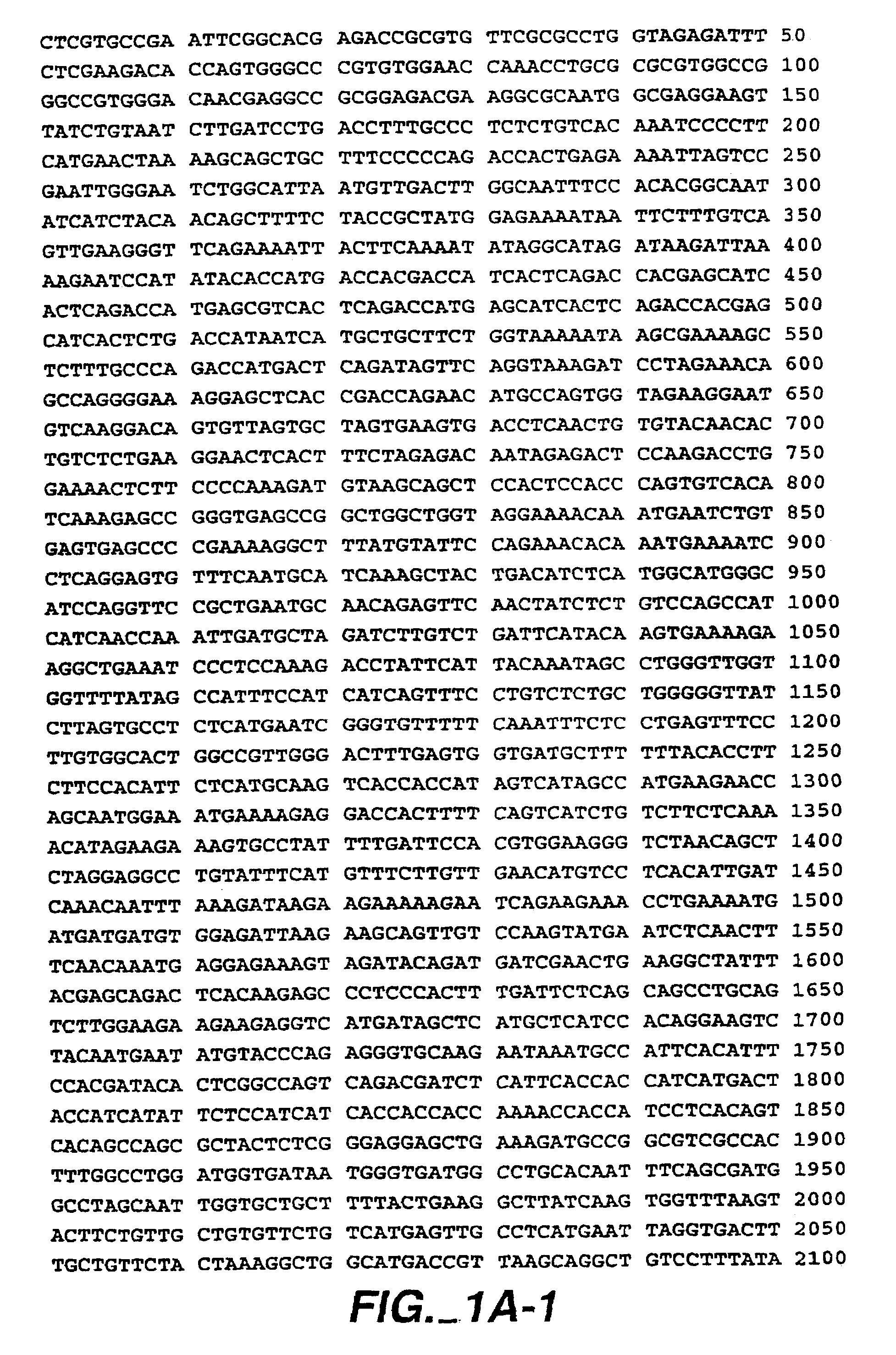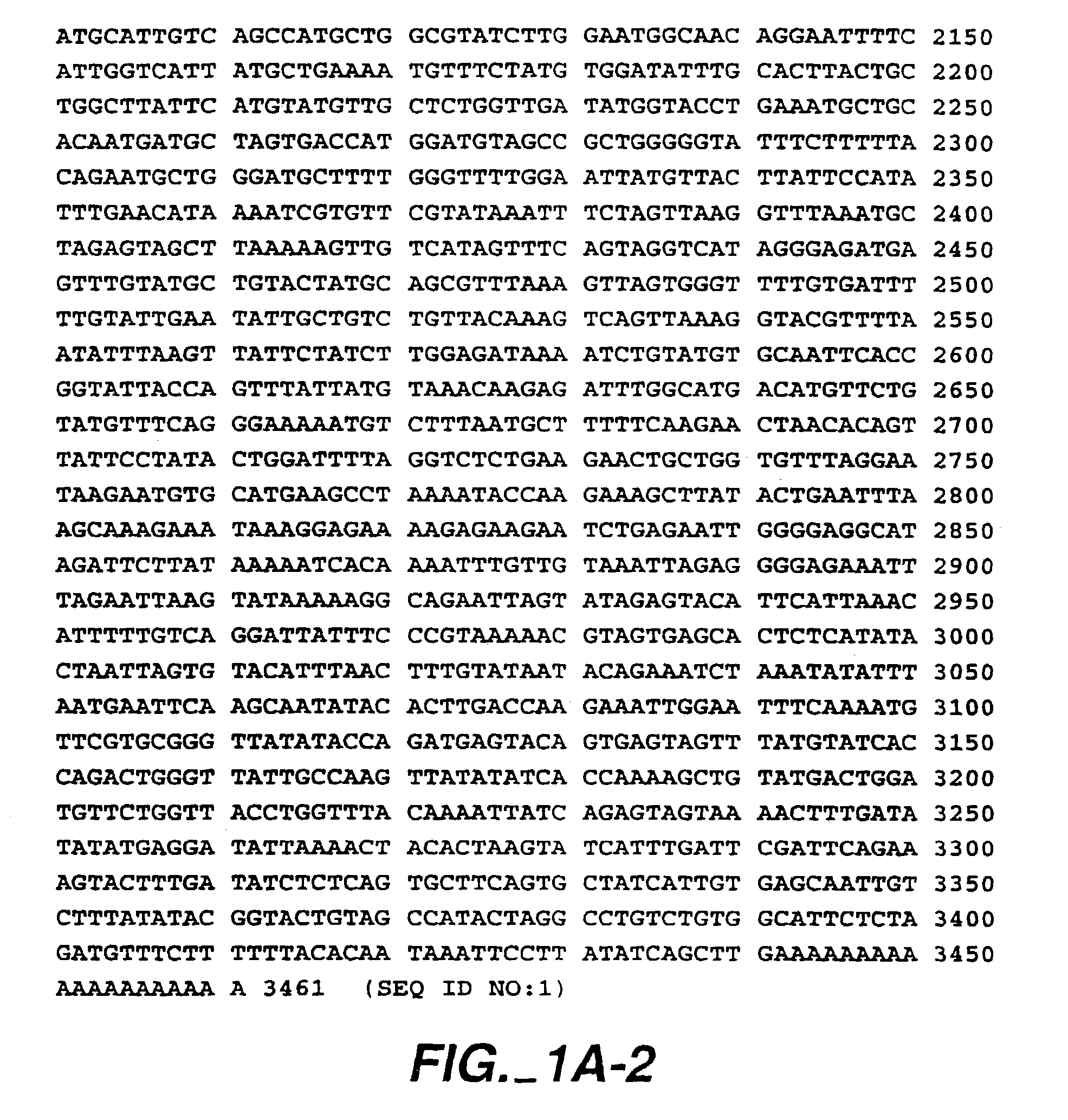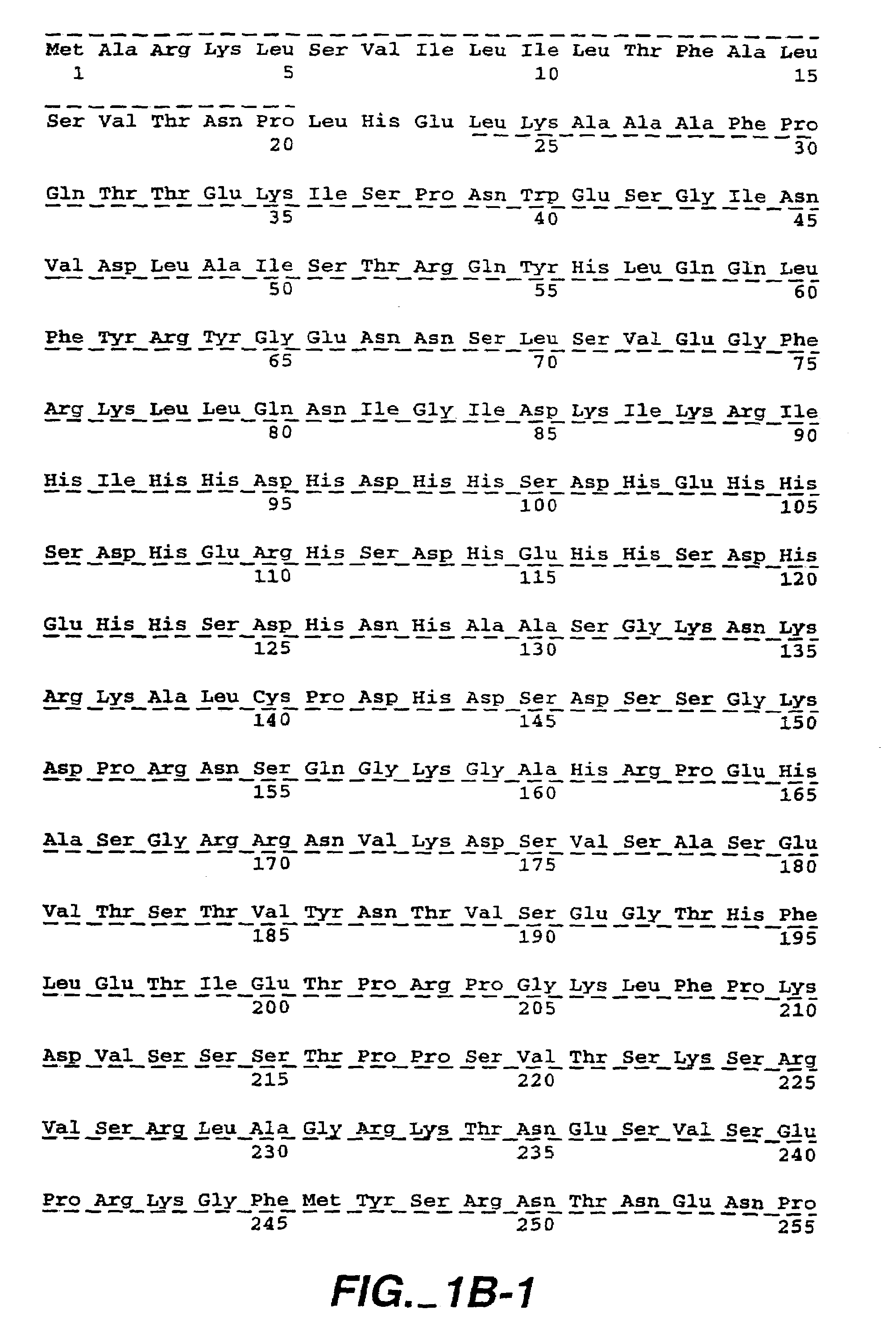Compositions and methods for treatment of cancer
- Summary
- Abstract
- Description
- Claims
- Application Information
AI Technical Summary
Benefits of technology
Problems solved by technology
Method used
Image
Examples
example 1
LIV-1 Expression in Tumor Cells Examined by Microarray Analysis
[0145]A form of breast cancer in which the cells overexpress the LIV-1 gene product (e.g. LIV-1-164647 mRNA) but do not overexpress ErbB2 has been discovered and is uniquely disclosed herein. Detection of the tumor type was made using microarray technology. Using nucleic acid microarrays, test and control mRNA samples from test and control tissue samples are reverse transcribed and labeled to generate cDNA probes. The cDNA probes are then hybridized to an array of nucleic acids immobilized on a solid support. The array is configured such that the sequence and position of each member of the array is known. Hybridization of a labeled probe with a particular array member indicates that the sample from which the probe was derived expresses that gene. If the hybridization signal of a probe from a test (disease tissue) sample is greater than hybridization signal of a probe from a control (normal tissue) sample, the gene or gen...
example 2
Preparation of the LIV-1 Polypeptides
[0151]A previously unknown LIV-1 gene and its encoded protein are uniquely disclosed herein. The nucleic acid sequence of LIV-1 (DNA 164647; SEQ ID NO:3 and its complement) and amino acid sequence of LIV-1 encoded therein (SEQ ID NO:4) are uniquely disclosed herein. This example describes the preparation and isolation of the presently disclosed LIV-1 protein encoded by DNA 164647. Subsequent examples describe the tissue expression profile of LIV-1 and its partial exposure at the cell surface. The LIV-1 gene is disclosed herein to be expressed in various tumor tissues including breast, lung, prostate, and colon. Cell surface expression of this tumor-associated protein makes LIV-1 a useful target for cancer detection and treatment.
[0152]The LIV-1 described by DNA 164647 has a unique nucleic acid sequence and unique amino acid sequence. The presently disclosed LIV-1 differs in nucleic acid sequence and amino acid sequence from another form of LIV-1 ...
example 3
Preparation and Efficacy of Anti-LIV-1 Antibody
[0225]A description follows as to exemplary techniques for the production of the anti-LIV-1 antibodies used in accordance with the present invention. Techniques for the production of anti-ErbB2 antibodies may be found in the ErbB2 publications listed supra and incorporated herein by reference.
[0226]The LIV-1 antigen particularly useful for production of antibodies may be e.g., a soluble form of the extracellular domain of LIV-1-164647 or a portion thereof, containing an anitgenic epitope. The extracellular domain region is indicated in FIG. 1. Alternatively, cells expressing LIV-1 at their cell surface can be used to generate antibodies (e.g. NIH-3T3 cells transformed to overexpress LIV-1). Other forms of LIV-1 useful for generating antibodies will be apparent to those skilled in the art.
[0227](i) Polyclonal Antibodies
[0228]Polyclonal antibodies are preferably raised in animals by multiple subcutaneous (sc) or intraperitoneal (ip) injec...
PUM
| Property | Measurement | Unit |
|---|---|---|
| Fraction | aaaaa | aaaaa |
| Fraction | aaaaa | aaaaa |
| Cell growth | aaaaa | aaaaa |
Abstract
Description
Claims
Application Information
 Login to View More
Login to View More - R&D
- Intellectual Property
- Life Sciences
- Materials
- Tech Scout
- Unparalleled Data Quality
- Higher Quality Content
- 60% Fewer Hallucinations
Browse by: Latest US Patents, China's latest patents, Technical Efficacy Thesaurus, Application Domain, Technology Topic, Popular Technical Reports.
© 2025 PatSnap. All rights reserved.Legal|Privacy policy|Modern Slavery Act Transparency Statement|Sitemap|About US| Contact US: help@patsnap.com



